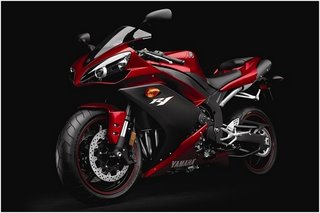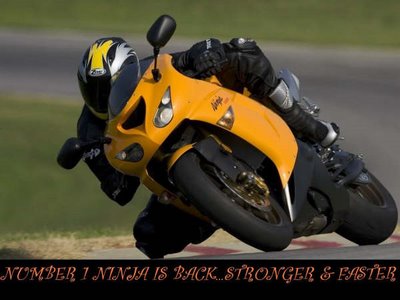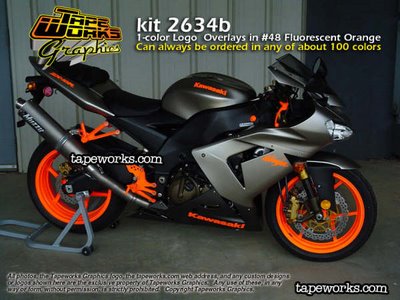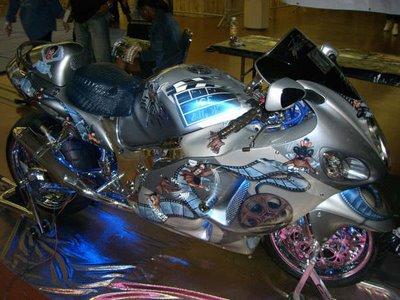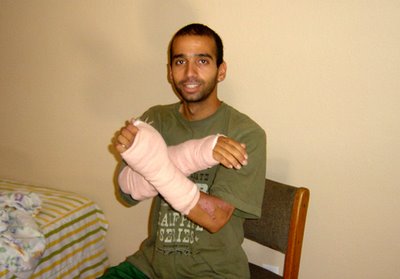 |
Ten years ago I signed on at Motorcyclist magazine and began commuting to work on a motorcycle over the busiest freeways and streets of Los Angeles. In those 10 years of commuting, two staff members had commuting accidents, neither of which caused significant damage or pain. That's five to seven editors riding to work every working day for 10 years. If we were the survey panel, the conclusion would be that commuting on a motorcycle is an extremely safe way to get to work. And with the proper skills, it can be.
Experience is a great teacher, but an often painful one. To help shortcut experience, we've compiled five basic steps to existing in traffic to help get commuters out of their cars and onto motorcycles. You'll save time (one of the few nonreplenishable resources we have!) and reduce parking problems, and your work day will begin and end with less stress and more pleasure. One thing we know for sure: That sport bike in your garage isn't just for Sunday mornings.
URBAN GUERRILLA STEP ONE: TRUST NO ONE
 |
Learn to rely on one person, and one person only: yourself. Be paranoid. When you see a dented, dirty or neglected car, be especially paranoid. Dents are a rolling history of mistakes, and you don't want to be involved. Dirt and neglect show disinterest, and that disinterest probably bleeds into their driving as well.
Experience has taught us to watch for particular car types in addition to neglected cars. Volvo works hard to promote the safety of its cars, and that means some owners of Volvos buy them because they know they're going to be in an accident. Sure, it's an unfair generalization of Volvo owners, but it's an observation made after a decade in Los Angeles. Watch for minivans. They're usually purchased to carry the kids, so the driver is often dealing with much more than the road. Beware of high-performance cars in a hurry; a modern car can accelerate and change lanes surprisingly quickly, so give them room if they're driving aggressively. Give four-wheel drive pickups some room because (another unfair generalization) they're often driven by aggressive young men who believe that might makes right. What car types can you trust? None.
URBAN GUERRILLA STEP TWO: AVOID BLIND SPOTS
If one thought rules your urban riding, let it be this: Stay out of blind spots. If you can't see the driver's face in the car's mirror, that driver can't see you and you simply don't exist. Place blind-spot avoidance on top of your priority list for urban survival. Use acceleration, deceleration and lane position to "ride in the mirrors" of the cars around you. Develop a blind-spot warning buzzer that blares every time you approach a blind spot. The Highway Patrol teaches its riders to constantly move through traffic, to ride slightly (slightly!) faster than traffic and move through blind spots rather than sitting in them. Good advice.
Of course, just because you're riding in the mirrors of a car doesn't mean that driver will use that mirror before changing lanes into you. Position yourself so that if the driver fails to see you in the mirror, you still aren't in danger of getting tagged. You will know when you're riding well and staying clear of blind spots because you are no longer using your horn to warn encroaching drivers of your presence; they've already seen you in the mirror, alongside or ahead. In fact, our response to "loud pipes save lives" is "get out of the blind spot."
URBAN GUERRILLA STEP THREE: BE DEFENSIVE, BE AGGRESSIVE
Combining defensive tactics and aggressive riding will create a riding portfolio that will weather any storm. The secret is knowing when to use each of the tactics. After all, blasting aggressively down Main Street is an open invitation for trouble. Conversely, creeping slowly down Main Street invites different but still deadly trouble, putting you at the mercy of other drivers' skills-or lack thereof.
Defensive riding means being aware of your space and maintaining that space by positioning yourself in surrounding traffic. Riding defensively is a way of looking at traffic to predict its effect on you, and making sure that effect is minimal.
Riding aggressively is much less a way of riding than an applied technique to be exercised only occasionally. As motorcyclists, we must put ourselves in view, and sometimes that means a bit of aggressive throttle use to come up even with a driver's window. Simply put, sometimes slowing down is extremely dangerous and some aggressive acceleration or lane changing is called for.
Create your own traffic destiny. Put yourself in a position with an escape route if your worst-case predictions come true. Look for traffic patterns and try to move through traffic, rather than sit within a knot of traffic. The time you become lethargic will be the time somebody parks a Suburban in your lap at 60 mph.
URBAN GUERRILLA STEP FOUR: MAKE ROOM FOR OTHERS' MISTAKES
In case you haven't noticed, drivers make mistakes. Dozens of them, from no turn signal to last-minute freeway exits to locked brakes at a yellow light to-well, how long a list do you need? America's current driver's training programs aren't going to correct America's drivers in the foreseeable future, so the secret is to plan on and predict the mistakes and make sure you're not affected. In other words, give 'em room to screw up.
Understand this: You won't change the mistakes being made out there, but by recognizing and giving them room to happen, you won't be negatively affected by them either. There's no reason to get upset, violent, aggressive or reactionary; once you begin to make room for mistakes, it becomes almost humorous to watch the stupidity around you because you will no longer be taken by surprise or put in danger.
URBAN GUERRILLA STEP FIVE: SLOW DOWN IN TOWN
Speed itself doesn't kill, but it sure makes those sudden stops painful. Basically, too much speed makes us unreadable. The car driver looks down the street, sees a headlight approaching at what he guesses to be the speed limit, and proceeds through the intersection. Unfortunately, the bike is doing double the speed limit and slams into the side of the car. Whose fault is it? Not the car driver's. Slow down to be seen; slow down to avoid being misread.
Slowing down allows you to stop before becoming involved in someone else's mistake. Even if you're the Kevin Schwantz of braking, it takes more distance to stop a bike from 50 mph than it does from 30 mph; that extra distance usually isn't available to urban guerrillas.
Slowing down gives your brain a chance to notice things and more time to react. Your peripheral vision widens and you relax enough to read and predict traffic. Try walking down the supermarket aisle and reading labels, then try running down the same aisle. Now imagine all those soup cans are about to jump into your path and you'll see how slowing down affects your perception. There are plenty of places to go fast, but in and around traffic isn't one of them. If you can't slow down in town, put me in your will.
URBAN GUERRILLA BONUS STEP: PRACTICE
When everything goes wrong and the above five steps fail to keep you in safety's arms, you'd better be a good motorcycle rider. Get to an empty parking lot and practice braking; take a Motorcycle Safety Foundation Experienced RiderCourse. Experiment with flicking lane changes. Become intimately familiar with the effects of countersteering, experimenting with differing pressures on the handgrips. Practice quick glances in the mirrors and hurried looks over your shoulder, as if you were initiating an emergency lane change. Use your turn signals in all conditions so that you'll remember to cancel them when things get stressful. Know the route you and your neighborhood commuters take on the way to the freeway and study the mistakes being made; when you're not on your bike, watch traffic patterns and instances that would get a rider in trouble.
All this is practice, and it's just as important for the urban guerrilla as it is for the expert-level roadracer. You can't win a trophy with your commuting prowess, but you can step out of the car or bus and add two irreplaceable things to your life: time and enjoyment.














